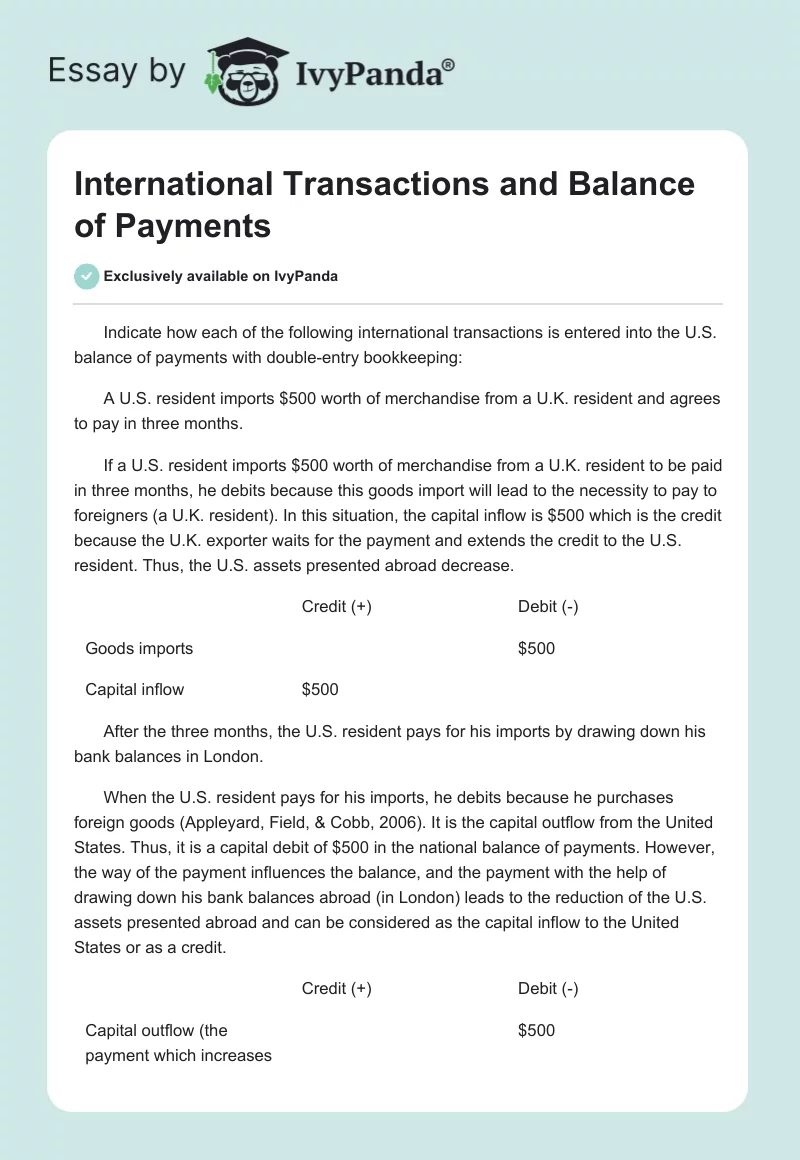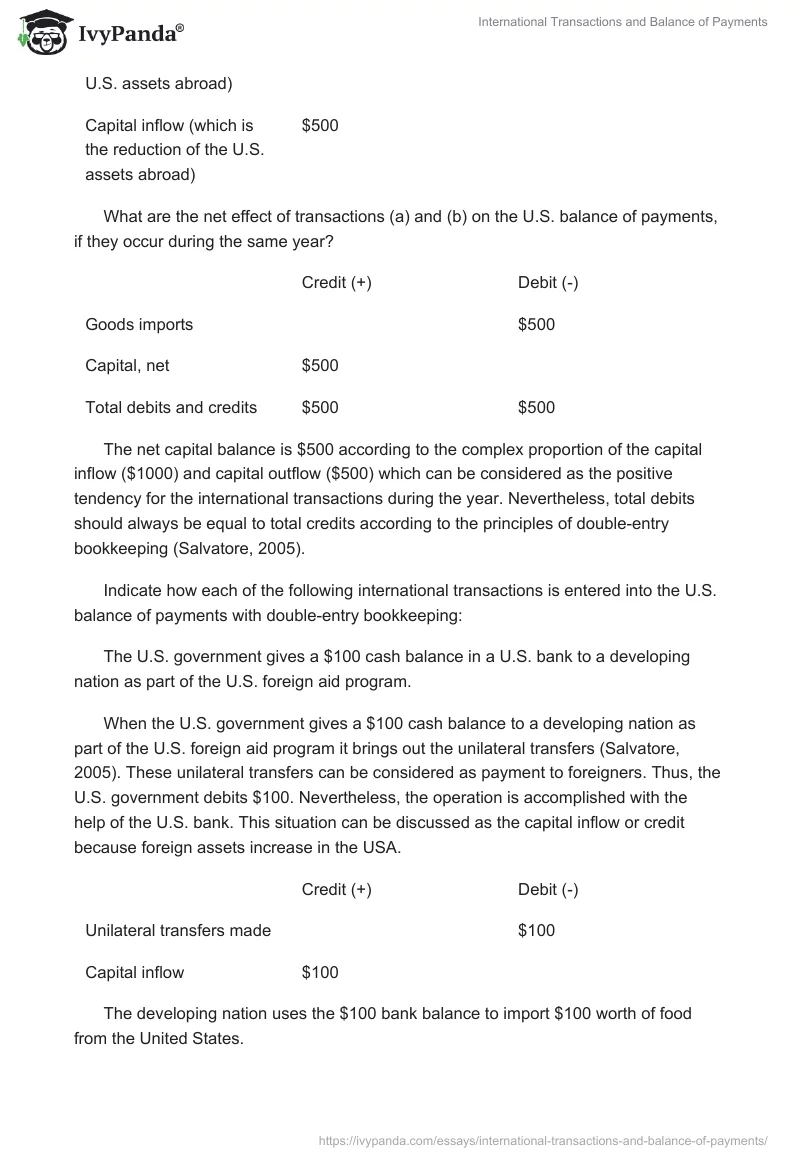Indicate how each of the following international transactions is entered into the U.S. balance of payments with double-entry bookkeeping:
A U.S. resident imports $500 worth of merchandise from a U.K. resident and agrees to pay in three months.
If a U.S. resident imports $500 worth of merchandise from a U.K. resident to be paid in three months, he debits because this goods import will lead to the necessity to pay to foreigners (a U.K. resident). In this situation, the capital inflow is $500 which is the credit because the U.K. exporter waits for the payment and extends the credit to the U.S. resident. Thus, the U.S. assets presented abroad decrease.
After the three months, the U.S. resident pays for his imports by drawing down his bank balances in London.
When the U.S. resident pays for his imports, he debits because he purchases foreign goods (Appleyard, Field, & Cobb, 2006). It is the capital outflow from the United States. Thus, it is a capital debit of $500 in the national balance of payments. However, the way of the payment influences the balance, and the payment with the help of drawing down his bank balances abroad (in London) leads to the reduction of the U.S. assets presented abroad and can be considered as the capital inflow to the United States or as a credit.
What are the net effect of transactions (a) and (b) on the U.S. balance of payments, if they occur during the same year?
The net capital balance is $500 according to the complex proportion of the capital inflow ($1000) and capital outflow ($500) which can be considered as the positive tendency for the international transactions during the year. Nevertheless, total debits should always be equal to total credits according to the principles of double-entry bookkeeping (Salvatore, 2005).
Indicate how each of the following international transactions is entered into the U.S. balance of payments with double-entry bookkeeping:
The U.S. government gives a $100 cash balance in a U.S. bank to a developing nation as part of the U.S. foreign aid program.
When the U.S. government gives a $100 cash balance to a developing nation as part of the U.S. foreign aid program it brings out the unilateral transfers (Salvatore, 2005). These unilateral transfers can be considered as payment to foreigners. Thus, the U.S. government debits $100. Nevertheless, the operation is accomplished with the help of the U.S. bank. This situation can be discussed as the capital inflow or credit because foreign assets increase in the USA.
The developing nation uses the $100 bank balance to import $100 worth of food from the United States.
When the United States gives unilateral transfers to a foreign country it is the capital outflow or debit which increases the national assets abroad. However, when the developing country imports the food from the United States this situation can be considered as the capital inflow or a credit.
What are the net effect of transactions (a) and (b) on the U.S. balance of payments if they occur during the same year?
The net capital balance is 0 according to the complex proportion of the capital inflow ($100) and capital outflow ($100) which can be considered as the neutral effect for the international transactions during the year. Thus, total debits are equal to total credits according to the principles of double-entry bookkeeping.
References
Appleyard, D., Field, A., & Cobb, S. (2006). International economics. Boston, USA: McGraw-Hill.
Salvatore, D. (2005). Introduction to international economics. Hoboken, NJ: John Wiley & Sons, Inc.


